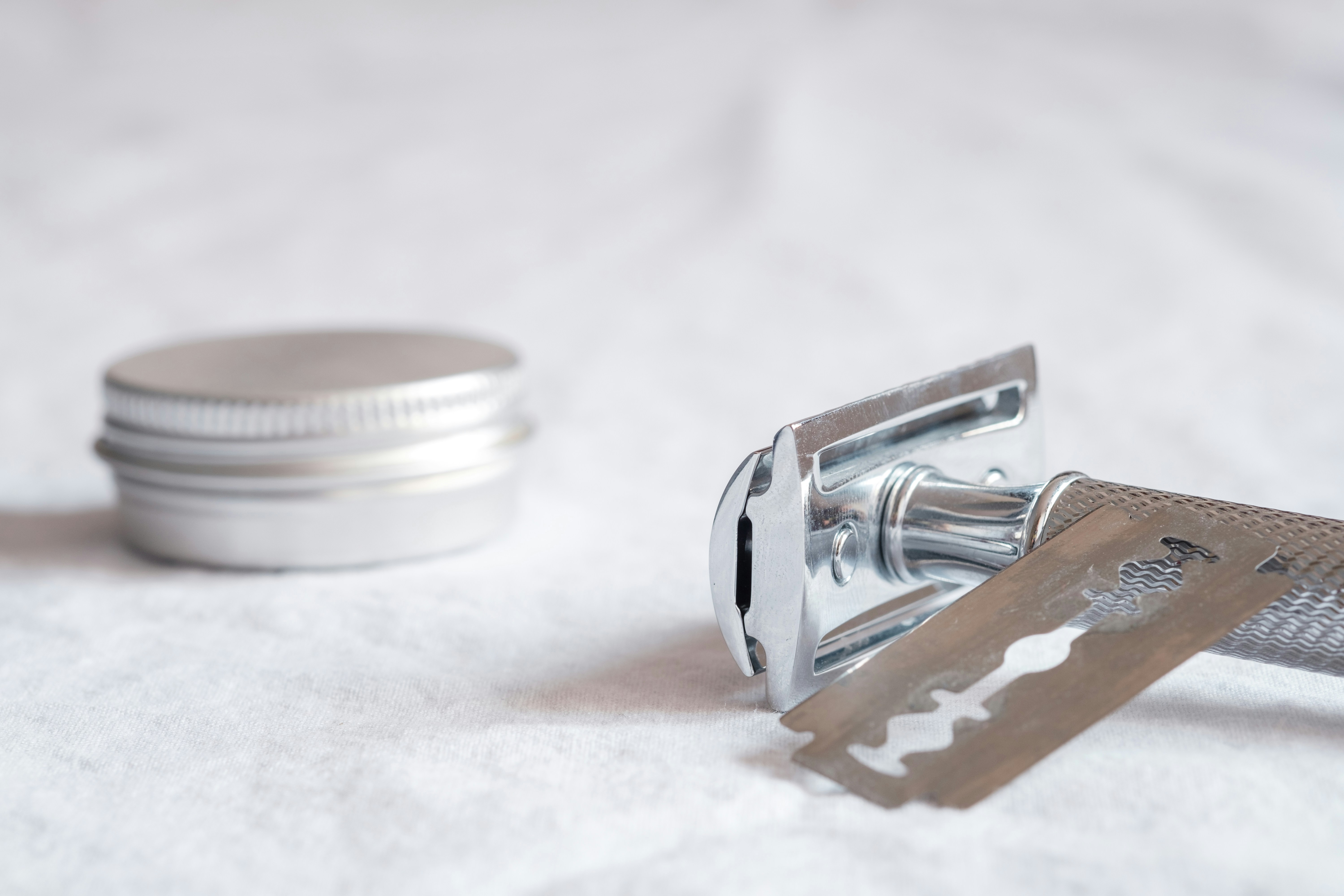
Shaving: stuff that matters and you need to know.
I shave my beard every (other) day. For many years, I used cartridge blades. They are expensive but provide the best, longest-lasting shave anyone can get. Some cartridge razors often have built-in lubricating strips to soothe the skin further and enhance glide. If you have not shaved for one or two days and have a brand-new cartridge, the experience is excellent and as fast as possible.
The longer you go without shaving, the harder it is for the cartridges to handle the longer beard. You will probably have to make multiple strokes and somewhat desperate attempts to clean the space between blades. You are more likely to press the blades against your skin harder, making a mess out of your face.
After switching my shaving routine, I now use a single double-edged blade. It handles longer hair much better and is more gentle on my skin. I use new high-quality blades for every shave since they are a more cost-effective option than cartridge blades. Washing cream and hair from the blade is much more practical between strokes. The smoothness of my shaved face does not last as long, but I avoid many issues with ingrown hair since I am not pulling hair and cutting it below the skin level. I love it!
Cartridge razors with multiple blades on your skin: pros and cons
The idea behind multiple blades is to progressively cut the hair closer to the skin with each blade. The first blade lifts the hair, the second cuts it and the third or subsequent blades trim any remaining stubble. This design allows for a closer shave with fewer passes, theoretically reducing skin irritation from repetitive strokes and minimizing the risk of nicks and cuts. However, the space between the blades can accumulate shaving cream, hair, and skin cells over time, which does affect performance. Properly cleaning the space between blades between strokes is usually impossible due to space constraints.
Since replacement cartridges are expensive, users try to make them last multiple shaves, with the corresponding cleaning issues becoming more prevalent over time. As the blade cartridge ages, they get a progressively sub-par horrible experience.
Cartridge razors are widely popular for their convenience. The economics behind the whole cartridge shaving system are rather apparent. Everything but the blades is plastic; you generate tons of waste and make recycling challenging. However, many companies now offer recycling programs for used cartridge razors, which can help reduce the environmental impact of this shaving method. Customers keep returning and buying the consumable heads repeatedly.
The Classic Single-Blade Approach: pros and cons
Double-edged (DE) "safety" razors have been around for nearly a century and are celebrated for their simplicity and precision. With a single blade, double-edged razors require more technique and a more precise shave. The absence of multiple blades means less skin contact overall, which can be gentler on sensitive skin.
Although double-edged razors only have one blade, the blade's sharpness, design, and superior quality can provide a very close shave. The key is in the technique—proper use can result in a shave that is as smooth as or smoother than that achieved with multiple blades, with fewer passes over the skin. The smoothness will not last as long, but you will have zero issues with ingrown hair.
Using a double-edged razor requires practice to master. Don't be scared; if your grandfather could do it, you can, too. The technique involves finding the right angle and applying the right amount of pressure to avoid cuts and irritation. Shaving with a double-edge razor can take longer than cartridge razors, particularly for beginners. But with practice, you'll find it's not as daunting as it seems.
Double-edged blades are generally much cheaper than cartridge refills. While the initial investment in a quality DE razor may be higher, the ongoing cost of blades is significantly lower. You will have much less of an issue with changing a 10-cent blade sooner than you would with a 3-euro cartridge head.
The Impact of Multiple Blades on Skin Smoothness
The crux of the argument often boils down to how multiple blades affect skin smoothness over time. The multiple blades are designed to reduce the number of strokes needed, benefiting a smooth shave in the short term. However, some users find that the more blades you have, the more potential for irritation, especially if the blades are not properly maintained or if the user has sensitive skin. If you have issues with ingrown air, as I do, you are likely going to love the effect of using double-edge blades.
Both cartridge and DE razors have merits. Cartridge razors offer convenience and ease, with multiple blades designed for a close shave in fewer passes. On the other hand, double-edge razors provide a classic, cost-effective approach, with a single blade that can deliver exceptional smoothness and precision.
Choosing the right tool depends on your priorities—whether you want the speed and convenience of a cartridge razor or the precision and cost-effectiveness of a double-edge razor. Ultimately, understanding how each type affects your skin and shaving experience will guide you in making the best choice for your needs.
Some footnotes...
I use a pre-shave cream, pedra de alúmen, and always apply a double dose of non-alcohol after-shave. The pedra de alúmen, a natural mineral, acts as an astringent and helps to close the pores after shaving, reducing the risk of irritation. I take my time shaving, giving each of the products mentioned time to act on my skin and hair. I always avoid shaving in a hurry.
The razors I use:
- Gillette Mach 3 (decent, mostly plastic; costs around 6 euros for razor and 2.83/0,54 euros for branded/unbranded cartridges).
- King C Gillette double-edge razor (Excellent, 100% metal; costs around 15 euros - classic style razor that I absolutely love)
- Henson AL13 mild (Excellent, 100% metal; costs around 65 euros - a modern take on safety double-edge shaving, with a high precision build, that provides a closer experience to shaving with cartridges)
Blades I use:
- RK (a pack of 100 costs around 10 euros—0.10 each): for every (other) day use.
- Feather (a pack of 100 costs around 29,47 euros—0.295 each) - if I haven't shaved in a while.
- Bambaw (a pack of 100 costs around 17 euros—0.17 each): These last a long time and easily handle more than one shave.
I was surprised to find out that there are YouTubers who focus on shaving products. You can find reviews for everything from (pre/after) shaving creams to razors/blades, comparisons, etc. They are very impressed with the Henson AL13. While I am not, it's a good product. It will last you a lifetime, just like most double-edge razors. It's a good bridge for people crossing over to using double-edge razors from cartridge systems. I find cleaning slightly more challenging than my King C. Gillette and way too light for my taste.
I also have a Phillips OneBlade. It is expensive, and the shaving results are mediocre. I use it to cut hair on my head, ears, and nose. It's safe and does not create problems with ingrown hair.
Happy shaving!




